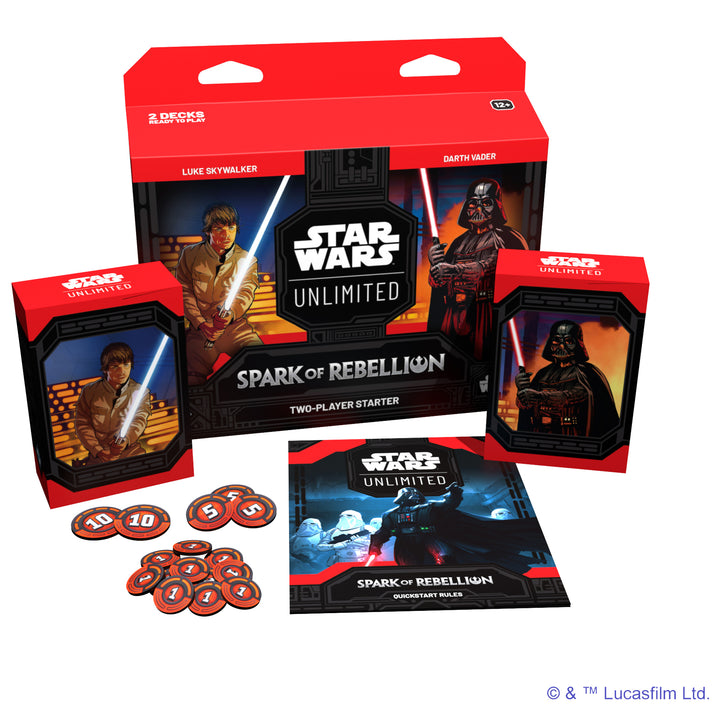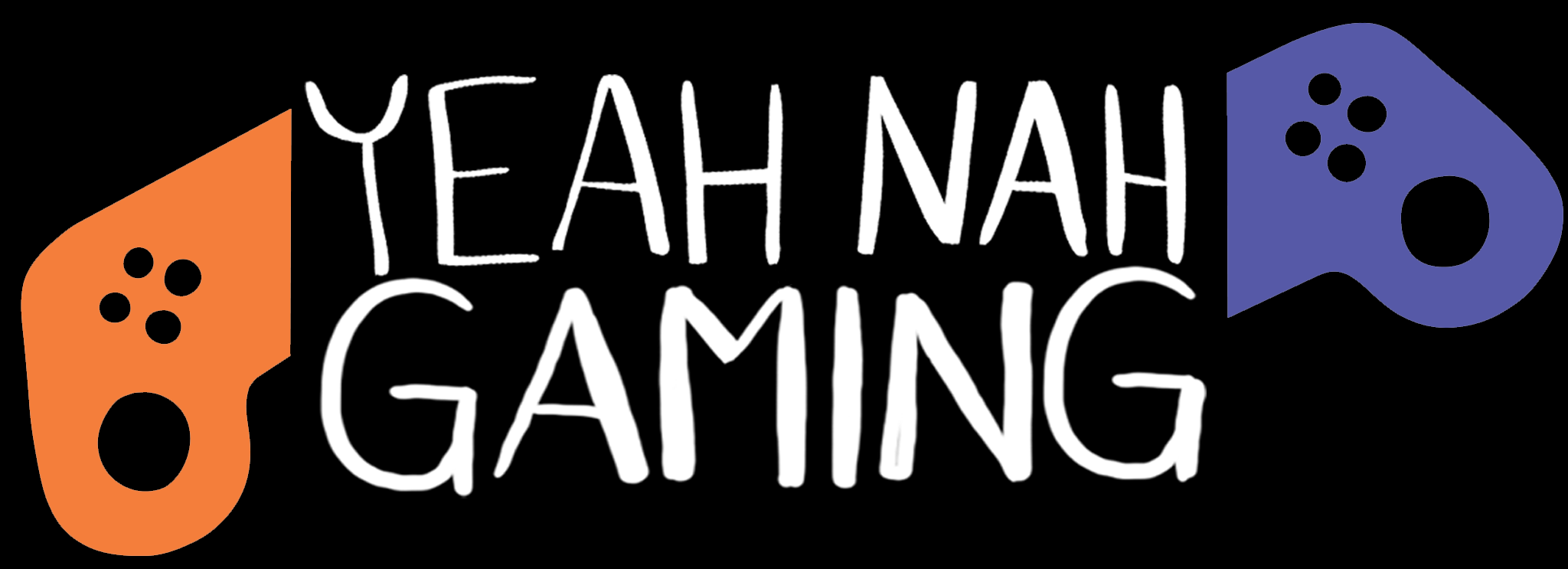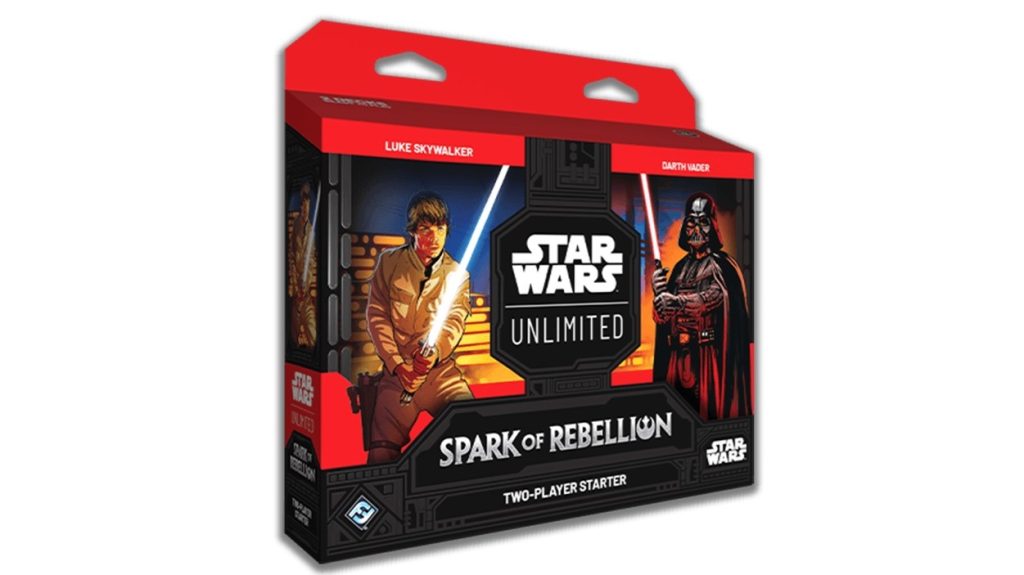If you have been following my journey into Magic: The Gathering, you will know I have fallen in love with this TCG. It has been a journey to get up to scratch, as it’s a game with 30 years of history. Dabbling with Flesh and Blood has been fun as it has less history. But even that TCG is now heaps of sets deep, meaning there are heaps of mechanics to learn. If only there was a new TCG that was a bit easier and earlier in its life.
Well, Star Wars Unlimited is brand spanking new, so I wanted to check this one out. So with that in mind, I nabbed the Spark of Rebellion Two-Player Starter Set.
What’s in the Starter Set?

The set comes with two decks that are ready to play with 55 cards each, including the tokens, base, and hero; more on this later. Alongside this are two paper play mats, a sheet of cardboard damage counters, an initiative counter, two cardboard deck boxes, and an instruction book.
It’s basically everything you need to play, except some card sleeves, which are only essential if you want to take care of your cards. Fortunately, the deck boxes fit the cards when they are sleeved, so at least they thought that far ahead.
So, how do you play the game?

It’s not too dissimilar to other TCG’s, but in many ways it’s easier. In short, you put your hero and base out on the table and pick up six cards. You then put two facedown which you use as resources. This is like Magic, but you can place any cards down as a resource, which removes the ability to be mana screwed.
Then whoever has the initiative counter plays first and plays a card, attacks with a card, or uses an ability on a card already played. Then the other player has a move, and you go back and forth until neither of you wants to do anything else, and that turn ends.
The next turn starts, you switch the initiative counter over, you untap…er, I mean, unexhaust your cards on the field, draw two cards, put up to one card down as a resource, and go again. For the most part, that’s it.
So what makes this game unique?

The most obvious thing is that you have an in-the-air battlefield, a ground battlefield, and a base to attack. When one of your cards attacks, you can either attack an opponent card that’s on the same battlefield or go for their base. Your tie fighter might not be able to attack my R2-D2, but my X-Wing or Administrators Tower is open for business.
And this is a fun part of the strategy; when you attack, you have to make a choice. Do you damage or kill an opponent’s unit so they will stop attacking you, or go straight for the base and try to win the game fast. Leaving opponents on the field, though, may result in you losing your base faster.
The other cool thing is your hero card. For a certain resource cost, you can transform it into a unit and drop it on the battlefield. The kicker is that when it gets taken out, it goes back to being the normal hero card and can’t enter the battlefield again.
Also, damage to a character stays there unless an ability heals it or until it loses all its health. This is a fun aspect of the game because if you use all your resources to bring out something big, that defense can still be chipped away at, leaving you thin on bodies.
What about card types?

What’s a TCG without card types? I dunno, but they all have them. In this case, you have aspect symbols, of which there are six types. With resources being a generic card, the challenge in your deck building comes in using the aspect types of your hero and base. If a card has symbols in it, you can play cards with the same aspect symbols. You can play cards without those same symbols, but they cost two resources more for each symbol you are missing.
So what’s the Spark of Rebellion Two-Player Starter Set like?
If you were going to grab two characters to base a battle around, it’s obviously Han vs. Greedo. Oh, wait, sorry, Luke vs. Darth Vader. These two decks use those iconic characters, and they are both fun. The Darth Vader deck is a lot more aggro, looking to absolutely smash you fast, whereas Luke is based more around controlling the game, drawing cards, etc.
As far as two decks to play against each other and learn the ropes, they are perfectly balanced and make for some great battles.
The damage counters are great as they are sturdy cardboard and essential for the game. The cardboard deck boxes are thin and won’t last too long. To be fair they are no thinner than a Magic: The Gathering Commander deck box. The play mats are thin paper and won’t last long. This is OK, as you only need them to get your head around the game. So for a Starter Set, they do their job.
Should you buy a Star Wars Unlimited – Spark of Rebellion Two-Player Starter Set?

Honestly, this one is an easy Hell Yeah! The instructions are easy to follow and the kit helps you figure out how to play the game. Fortunately, the game is fun as hell to play. If I get more into Star Wars Unlimited then I will probably still keep these decks intact. That way I can whip them out and play a balanced game at any time.
A better play mat or some decent card sleeves would have been nice, but there is everything you need to play and have a blast with this new TCG in the box.

